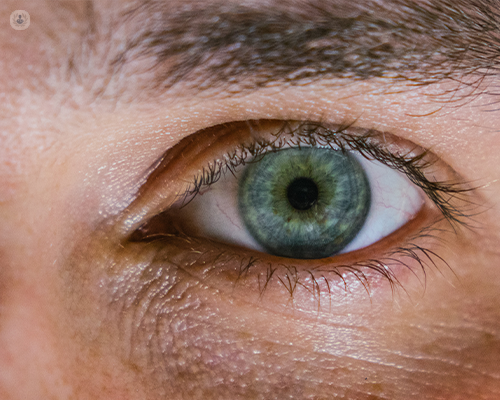Ophthalmic brachytherapy
Dr Sarah Partridge - Clinical oncology
Created on: 02-08-2013
Updated on: 01-12-2024
Edited by: Karolyn Judge
What is ophthalmic brachytherapy?
Ophthalmic brachytherapy is a technique used to treat eye tumours. This technique involves removing the tumour without affecting the eye or eyesight. Treatment aims to get rid of cancerous cells by irradiation.

Why is ophthalmic brachytherapy required?
Ophthalmic brachytherapy is used to remove an ocular tumour while preserving the eyeball. It can be used to treat:
- choroidal melanomas;
- retinoblastomas, and;
- choroidal metastases.
What does it involve?
Ophthalmic brachytherapy uses radiotherapy to supress malignant cells in a localised manner.
What happens
A gold plaque with radioactive ‘seeds’ is sutured directly on the eyeball. This small, circular plaque empties in the contact area. Small iodine bars, which are 125th of a millimetre wide and four millimetres high, are placed in this silicone based area.
The metal prevents the radiation from escaping outside, and therefore it stays concentrated in the affected area. As the plaque is made out of a noble metal, irritations are avoided.
This plaque is saturated on the white of the eye, where the injury is, constantly irradiating malignant cells. The plaque size may vary depending on the spread of the tumour (between ten and 22 millimetres in diameter).
How do you prepare for the ophthalmic brachytherapy procedure?
Different specialists are involved in ophthalmic brachytherapy treatment: oncologists, radiologists, and ophthalmologists.

What can specialists do before undertaking the ophthalmic brachytherapy procedure?
The problem should first be identified, along with the location and severity. To do this, diagnostic imaging techniques are used. The tumour is looked at by doing a fundus examination. The depth is also worked out by doing an ultrasound and an MRI.
This data is passed to a computer to plan out a treatment. This is an important step as the technique must be very precise, and a simulation programme allows different potential outcomes to be seen.
What's involved in post-operative care after ophthalmic brachytherapy?
Once the plaque has been sewn onto the eye, the patient must be in hospital for five days. They need to wear lead glasses to protect others from radiation.
After these five days, the plaque is removed so that the gamma rays continue to work until a scar replaces the tumour. The patient will go for a check-up a few days after the procedure has been done.
Are there alternative treatments to ophthalmic brachytherapy?
Depending on the condition, there are different alternatives:
- Radiation therapy
- Laser treatment
- Eye cancer surgery
- Chemotherapy
- Targeted therapy and immunotherapy drugs.
